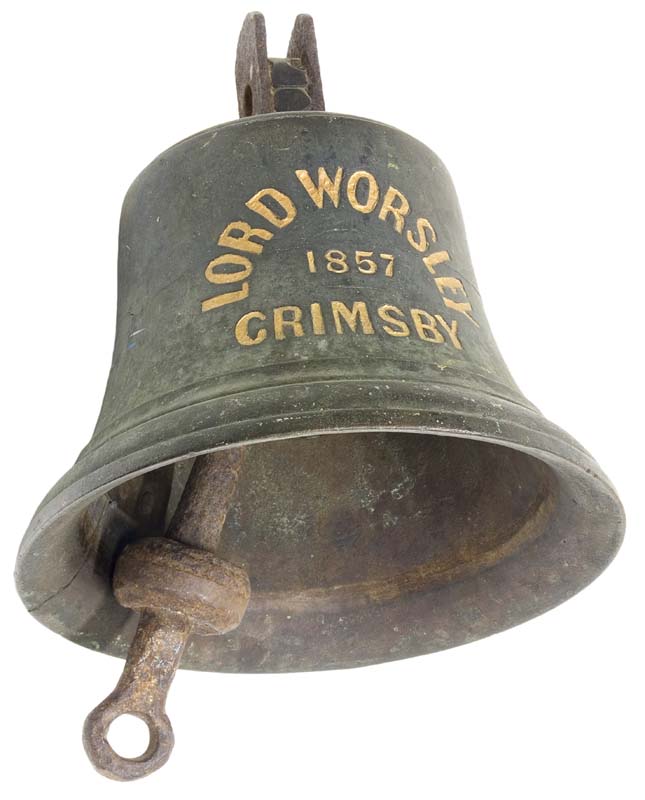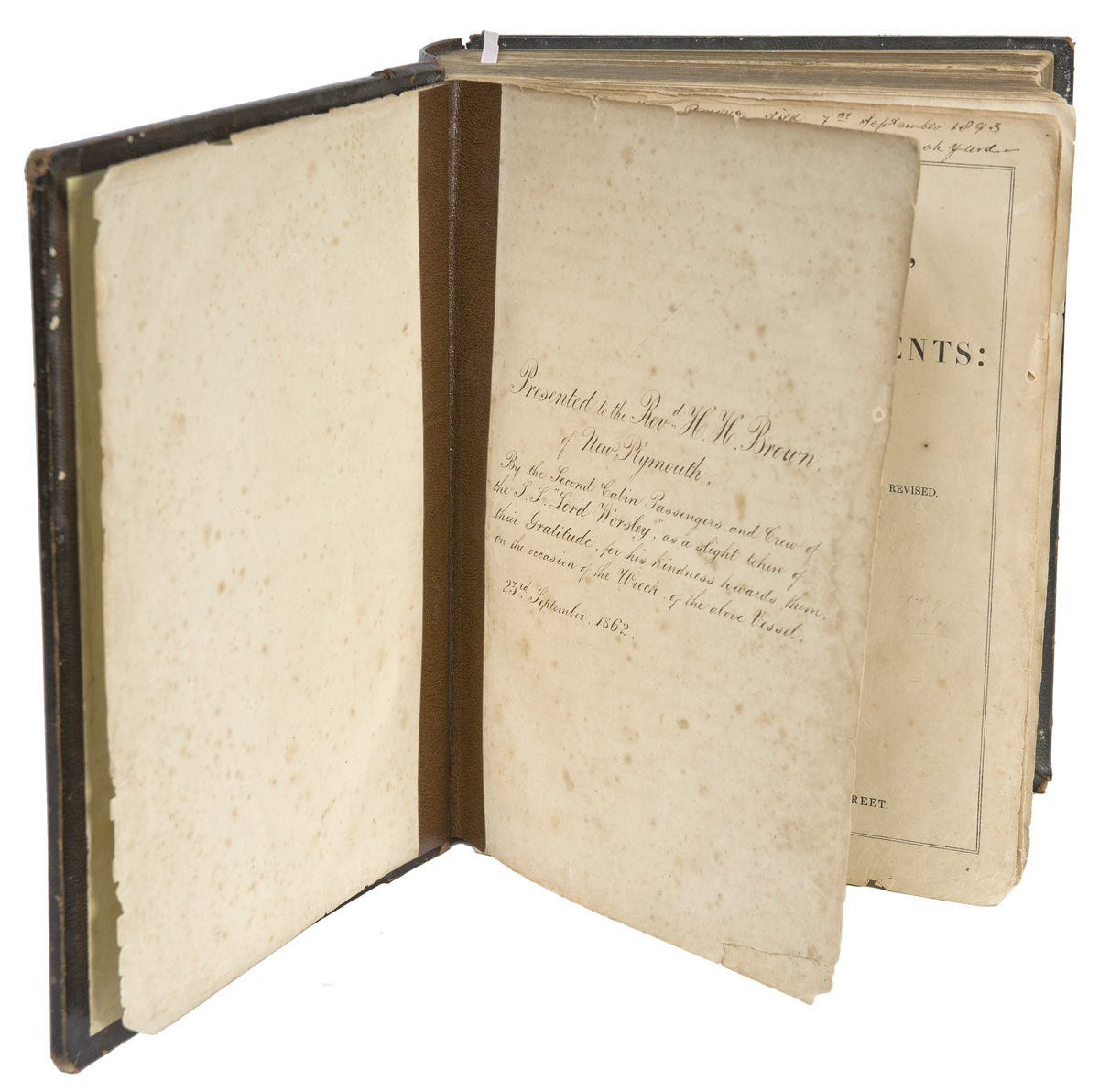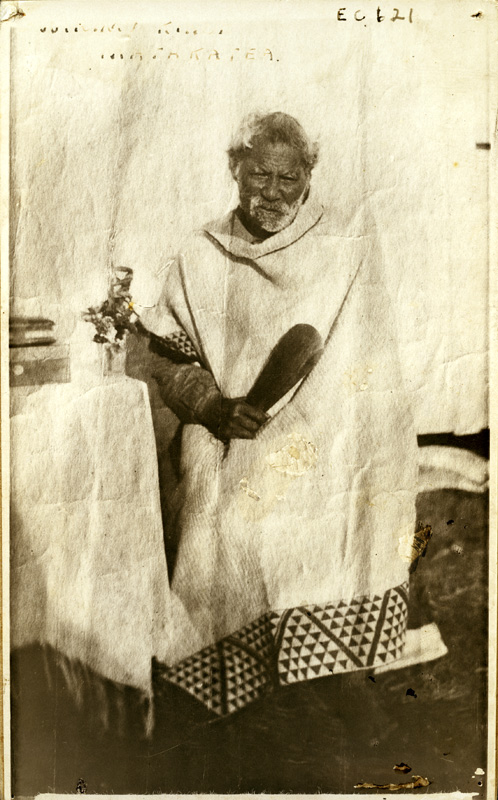



One wild windy Taranaki night in 1862, a ship bearing 66 people veered off course and on to enemy lands. This is the story of the Lord Worsley, a 600 ton steamer that smashed on to rocks in Te Namu Bay near Opunake.
About 1am on 1 September, the call went out: “All hands on deck!” The 35 members of the crew and 31 passengers went up top to find the royal mail steamer in a perilous position. "It was blowing hard on shore and raining heavily; land was visible on each side and right ahead of the doomed ship, with heavy breakers all around" a newspaper report said. "There seemed but small prospect of any on-board reaching land. However, the ship drove on and got near the shore, she touched, still, on she went and at length settled fast on the rocks perfectly upright."
The Lord Worsley became wedged in boulders, but the high tide was still seven feet deep around the ship. Because of this, a decision was made to hold tight until daylight. Meanwhile, the crew, headed by Captain James Bowden, got the life rafts ready to abandon ship if things got worse.
Among the Lord Worsley's passengers were Captain Vine Hall, Robert Graham, Captain Butler, C.I. Taylor, Captain and Mrs Campbell, their two children and two servants, Miss Briggs, Captain Muirhead, several ladies and more children.
The luggage was also valuable, especially that of Miss Briggs, who was a wealthy lady with a large amount of jewellery and plate with her. But the biggest treasure was a large amount of gold consigned to the Bank of New Zealand.
When the rising sun began to shed light on the wreck, and the tide began to draw away from the rugged rocks, the passengers were helped from the stricken vessel. And into war-torn Taranaki.
Two months before, a huge hui had been held at Te Ikaroa a Maui, at the mouth of the Kapoaiaia River. More than 600 men from Taranaki, Ngāti Ruanui, and Whanganui iwi assembled in the 100 foot long meeting house to discuss the issues of land, the price of tolls on King Matutaera Pōtatau's gate at Kapoaiaia and the making of roads.
At the hui the men resolved that if Pākehā extended their roadmaking beyond Waireka (three miles south of New Plymouth) it would be looked upon as a declaration of war.
The roadmaking continued.
It was into this troubled social climate that the people from the Lord Worsley landed on that first day of spring.
They were soon to face their “foes” because, just 300 yards (275 metres) from the wretched wreck, was the thriving Māori village of Te Namu led by Chief Wiremu Kīngi Te Matakātea. He came down to the frightened passengers and told them to make use of any of the houses in his kainga (village) and assured them they were among friends.
Under a sub-heading “Parleying With The Natives”, the newspaper article tells how the crew and passengers settled themselves into the village, while the officers, Matakātea and fellow chief Arama Karaka inspected the ship. It was a total wreck.
A deal was discussed to leave the remains of the ship to the people of Te Namu, if they helped the crew, passengers and their luggage get safely to New Plymouth. "Some presents were also made to the chiefs, who seemed pleased, and dispatched a messenger to the king's gate at Kapoaiaia," the newspaper said.
After a few hours the messenger returned, saying news of the wreck had been sent to New Plymouth and some of the King's men would be arriving at Te Namu to decide whether the party would be allowed through.
Meanwhile, at Te Namu, things were heating up. "…there was a constant dread of some quarrel breaking out between the natives and some of the crew, who had got mixed up with some of the young native men and women" the report said. "At length matters looked so threatening that Captain Butler appealed to the chiefs to quiet the natives, while he induced the crew to withdraw."
On 3 September, Captain Bowden and four men took a small boat and headed out safely through the breakers and towards New Plymouth to get help. On land, talks began. "The natives now held a korero (talk), which resulted in one of the leading men of the tribe handing in an account for 28 pounds 10 shillings, for the use of the six whares (houses/huts) for two days," the old news story says.
Captain Vine Hall agreed to pay the money – once the band of travellers got to New Plymouth. This did not satisfy the people of Te Namu.
"Suddenly a cry arose that the King's people were coming and some 20 horsemen galloped up, headed by Erueti, afterwards known as Te Whiti (the prophet of Parihaka)." He shook hands with Captain Butler. Then Te Whiti spoke, "This is not an affair between the Government and the natives, but Iwi Mate [people of God] and the King's natives. When the Governor comes we will settle that; if he passes through the King's gate it will be settled. Our feelings towards the Governor are bad, because he is not sincere; he only speaks well to us to get our land. If he is our friend let him treat the natives the same as he treats the Europeans; leave off lying to get our land, acknowledge the King, allow free trade in powder, etc."
Following a long debate with Captain Butler, Te Whiti then spoke to the large gathering of Māori people, urging them to allow the passengers and crew to leave. The luggage was inspected and toll charges taken for the King's gate.
On Thursday 4 September, the Māori discovered a number of powder kegs had been thrown overboard from the Lord Worsley and into the sea, making them useless for gunfire. Even worse, a rifle and sword belonging to Captain Campbell were found hidden in coals, where Captain Muirhead had stashed them. There was an outcry from the Māori, but no blood was shed.
The following morning, the castaways left Te Namu. "… the ladies' carts started, followed in half an hour by the luggage," the news report said. "That night the party slept at the King's council house, and on the 6th they were all safe in New Plymouth."
The book, New Zealand Shipwrecks: 195 years of disaster at sea, sums up the outcome of the Lord Worsley incident. "Considering all the circumstances of the case, wrecked as they were upon what may be properly termed an enemy's coast, the Maoris [sic] behaved very well to the unfortunate shipwrecked people."
Griffin, E.M. (1972). Tales of Te Namu and Hori Teira. New Plymouth: Taranaki Newspapers Ltd.
Ingram, C.W.N. (1990). New Zealand Shipwrecks: 195 years of disaster at sea. Auckland: Beckett.
Ingram, C.W.N. (1984). New Zealand Shipwrecks, 1795-1982. Wellington: Reed.
Rawson, D.H. (1984). Te Namu: Historic Site at Opunake. New Plymouth: New Zealand Archaeological Association.
De Jardine, M. (1984). Shipwrecks on and off the Taranaki coast: incorporating strandings, sonkings and some sailings. New Plymouth: M. de Jardine, Taranaki Newspapers.
De Jardine, M. (1997). Of Signals, Ships and Sundry Snippets. New Plymouth: Margaret De Jardine.
Search the Puke Ariki Heritage Collection
LinkPlease do not reproduce these images without permission from Puke Ariki.
Contact us for more information or you can order images online here.